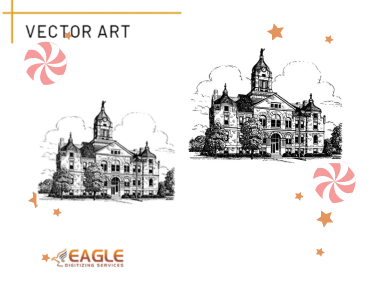How to Find and Replace the Font during Raster to Vector Conversion?
html
Converting raster images to vector graphics is a crucial process in various fields such as graphic design, printing, and digital art. One of the common challenges during this conversion is dealing with fonts. Fonts in raster images need to be accurately identified and replaced in the vector version to maintain the design's integrity. In this guide, we will explore the methods and tools available for finding and replacing fonts during raster to vector conversion. For those looking to delve deeper into vector graphics, vector images offer a wealth of resources.
Understanding Raster and Vector Graphics
Before diving into the specifics of font replacement, it's essential to understand the difference between raster and vector graphics. Raster graphics are composed of pixels, which makes them resolution-dependent. This means that when you scale a raster image, it can become pixelated or blurry. On the other hand, vector graphics are made up of paths defined by mathematical equations, allowing them to be scaled infinitely without losing quality.
The Importance of Fonts in Design
Fonts play a critical role in design, influencing readability, aesthetics, and the overall message of the artwork. When converting raster images to vector graphics, maintaining the original font style is crucial to preserve the design's intent. However, raster images do not contain font information, making it necessary to identify and replace fonts manually during the conversion process.
Tools for Identifying Fonts
Several tools can help identify fonts in raster images. These tools analyze the text in the image and compare it to a database of fonts to find the closest match. Some popular font identification tools include:
- WhatTheFont: A web-based tool that allows users to upload an image and identify fonts used in the text.
- FontSquirrel Matcherator: Similar to WhatTheFont, this tool helps identify fonts by analyzing uploaded images.
- Adobe Capture: A mobile app that can identify fonts from photos taken with your smartphone.
Replacing Fonts in Vector Graphics
Once the font is identified, the next step is to replace it in the vector graphic. This process involves using vector graphic software such as Adobe Illustrator or CorelDRAW. Here’s a step-by-step guide:
Step 1: Import the Raster Image
Open your vector graphic software and import the raster image you wish to convert. Most software will have an "Image Trace" or "Live Trace" feature that converts the raster image into a vector format.
Step 2: Identify and Replace Fonts
Use the font identification tools mentioned earlier to determine the font used in the raster image. Once identified, use the text tool in your vector software to replace the traced text with the correct font. Ensure that the font size, weight, and style match the original design.
Step 3: Fine-Tune the Vector Graphic
After replacing the fonts, review the entire vector graphic for any discrepancies. Adjust the paths and nodes as necessary to ensure the vector version closely matches the original raster image.
Challenges in Font Replacement
Replacing fonts during raster to vector conversion can be challenging due to several factors:
- Font Variations: Some fonts have multiple variations, such as bold, italic, or condensed, which can complicate identification.
- Low-Quality Images: Poor quality or low-resolution images can make it difficult for font identification tools to accurately analyze the text.
- Custom Fonts: If the original design uses a custom or proprietary font, finding an exact match may be impossible.
Best Practices for Font Replacement
To ensure a smooth font replacement process, consider the following best practices:
- Use High-Quality Images: Start with the highest quality raster image available to improve font identification accuracy.
- Keep a Font Library: Maintain a library of commonly used fonts to expedite the replacement process.
- Consult with Designers: If possible, consult with the original designer to obtain font information or suggestions for replacements.
Future Trends in Font Replacement
As technology advances, we can expect improvements in font identification and replacement tools. Machine learning and artificial intelligence are likely to play a significant role in enhancing the accuracy and efficiency of these processes. Additionally, the development of more sophisticated vector graphic software will streamline the conversion process, making it easier for designers to maintain the integrity of their designs.
For those seeking professional assistance, Eagle Digitizing excels in delivering professional vector art services, transforming creative visions into scalable designs. Whether you're dealing with complex font replacements or intricate vector conversions, their expertise ensures high-quality results.
.png)

